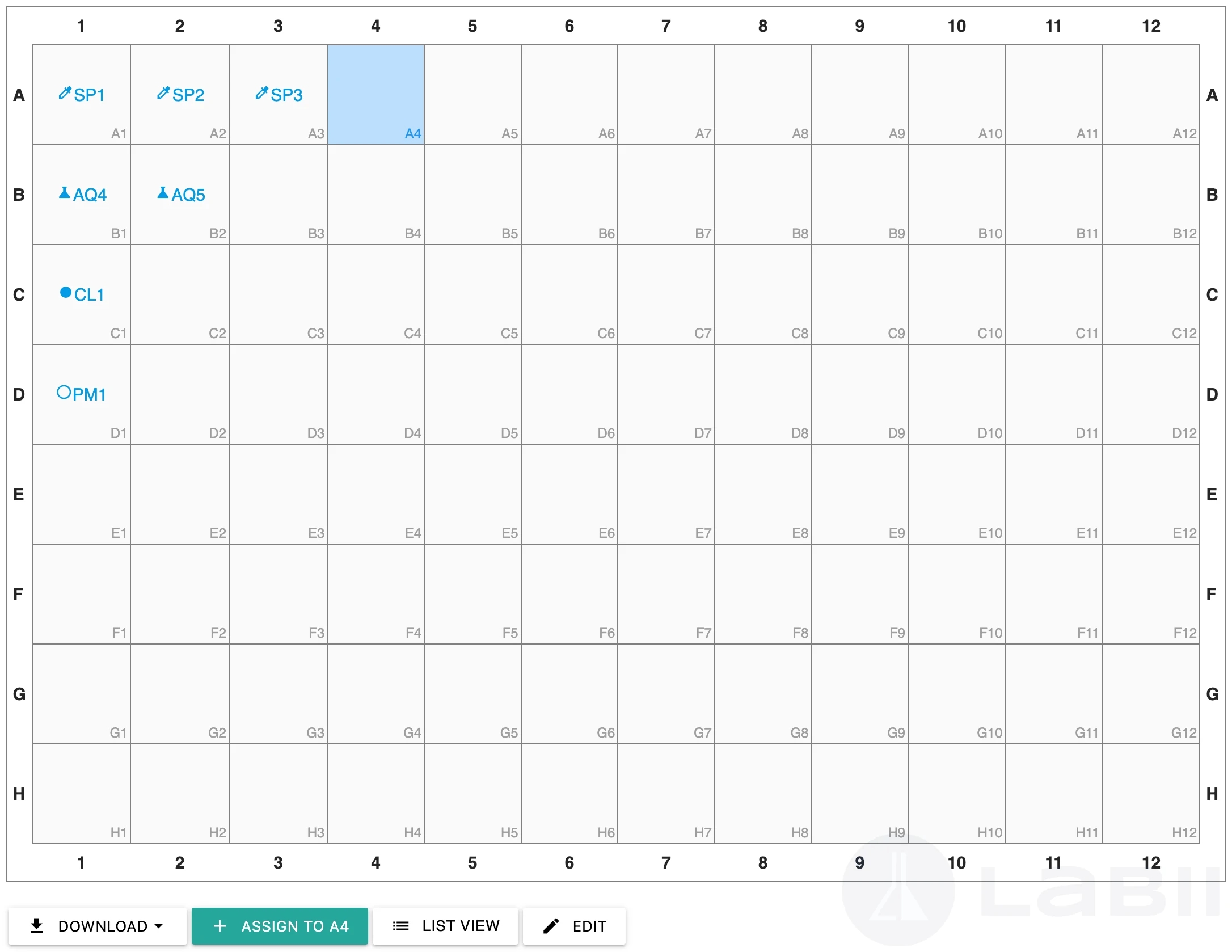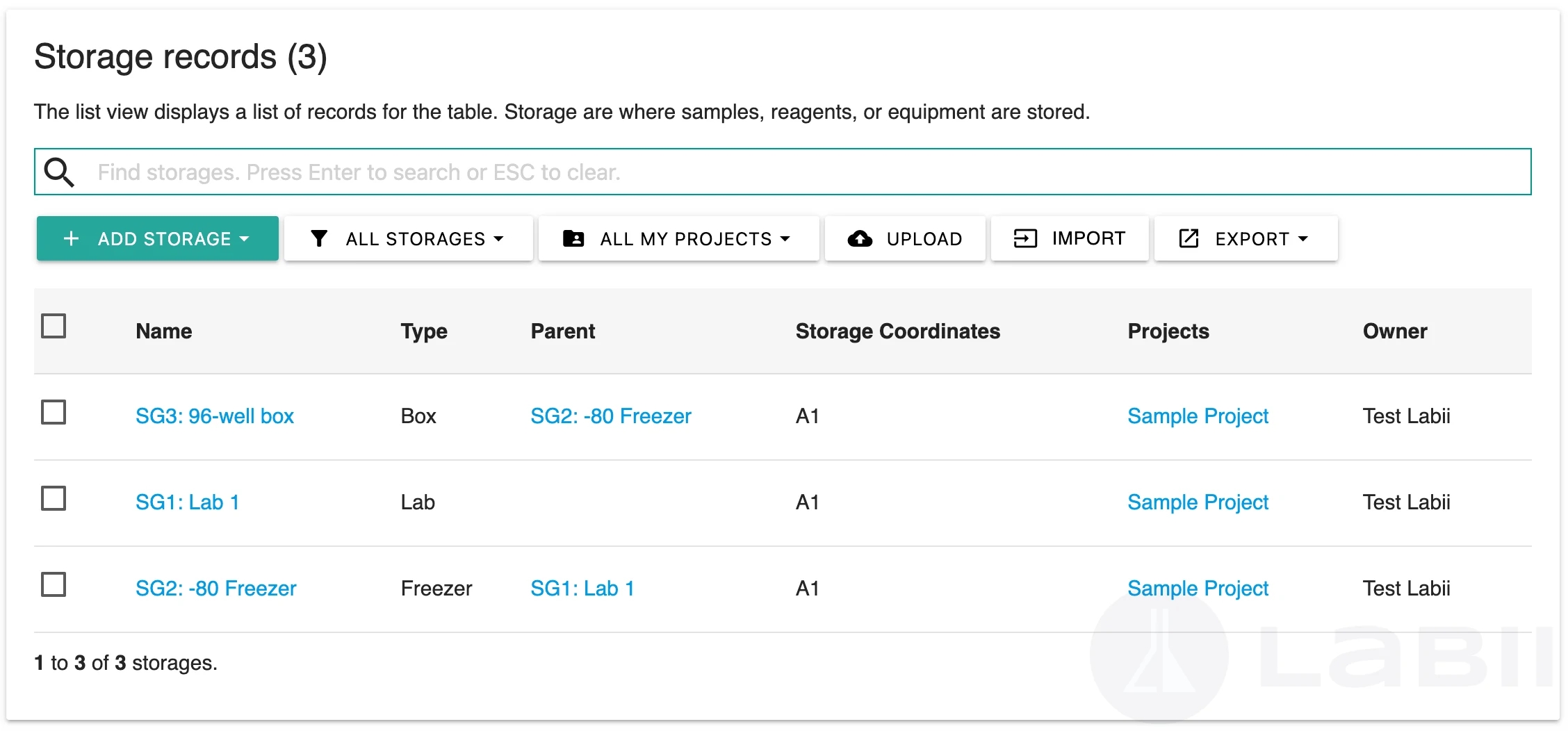2022-08-19 Sample Storage Management In Labii LIMS
2022-08-19
What is storage management
Inventory management systems (IMS) track all the stock in warehouses and document where it's stored. A warehouse management system (WMS) keeps track of where each type of stock is located in a warehouse. Both solutions often work together. Keep track of all inventory across all locations. Sample storage management systems are small versions of warehouse management systems, which manage all samples within a laboratory.
In the case of a lab or a company, you might not have as much space to store items as you would in a warehouse, but there are still a lot of spaces that are known as storage. As an example, liquid nitrogen tanks, racks, shelves, freezers. The importance of having all storage locations organized and able to identify the samples when needed remains a critical requirement.
There is nothing more tedious and frustrating than trying to find a sample by opening multiple freezers and searching over multiple boxes in order to find it. With Labii’s sample storage management software, it will be a lot easier for you to locate a box and find samples when you need them.
Labii integrates storage management to help researchers keep track of lab supplies. Labii's sample management system integrates seamlessly with all existing Labii systems and can be linked to samples, equipment, and more.

Labii's sample management system has the following benefits
Robust and customizable. Labii's storage management system is robust and allows you to track storage types and sizes, manage parent-child relationships, and monitor storage usage. You can also customize it to track other fields you are interested in.
An all-in-one storage management system. The Labii sample storage management system allows you to manage all of your lab's samples and biospecimens. Among these are blood samples, cell lines, antibodies, plasmids, soil, etc. It is one system for all types of data and there is no need to look for a different system for each type.
A variety of methods for creating storages. Labii includes multiple methods for creating new records, and all of these methods can also be used for creating new storage.
Easily identify storage with a barcode. Labii's barcode system allows you to create barcode labels for each storage unit. Also, the storage unit can be easily identified, assigned to other samples or aliquots with the built-in scanning function.
View storage layout on a map. Labii provides digital storage map for managing location information as well as a solution for planning, optimizing, and navigating complex layouts. Users can access inventory, assets, and more real-time data with positioning solutions.
Flowchart for finding storage locations. The Labii system generates a flowchart showing the relationship between parent and child storage so you can find it at a glance. Each box can also be clicked to navigate between different levels of storage.
Analyze the utilization and availability of your storage. Labii provides real-time space usage information on the amount of used and available space for each storage. These values can be used to generate insights using filters and charts.
How Labii storage works
Create storage. In Labii, you can create storage using one of the following three methods based on what you require:
Create one storage record with the built-in form. It is most effective to use this method when you only need to create a few storage units.
Create storage with bulk add form. This method allows you to create multiple storage at the same time and is best suited for situations where the number of storage records you need to create ranges between 2 and 20.
Create storage with Import function. If you need to make tens or hundreds of storage records at the same time, this method is the best option.
Manage storages. You can manage all your storages in the platform by using the Storage list view. From the side menu, you can easily access the Storage list view by clicking on the Storages table. Learn more at here.

Print storage barcodes. You will be able to print the storage labels or barcode directly from Labii once the storage have been created. This can be achieved by first going to the Storage list view, selecting the storages you want to print, from the Bulk Print menu, choosing Barcode or QR code as the type of code you want to print out. Learn more at here.

Find a storage. Learn more at here.
In case you are on the Labii platform and are looking to find a storage based on a couple of keywords or a name, you can do so using Labii's search tool.
In the event that you happen to be standing in front of a storage or you happen to have a storage box with you, you will be able to locate this storage by scanning the barcode or QR code.
Locate a storage. If you are trying to locate where a storage box is stored, Labii's Relationship Flowchart widget can help you locate a storage at a glance. Learn more at here.

View storage layout. Labii provides digital storage map for managing location information as well as a solution for planning, optimizing, and navigating complex layouts.

Assign storage. Using Labii, you are able to assign storage to any other samples, specimens, etc., in an easy, intuitive manner. Learn more at here.
Summary
The Labii storage management is universal to all Labii tables. Samples can be assigned to the storage for management. The storage can also be assigned to equipment to mark where it is located.
Any lab worker will tell you that samples are as valuable as gold, so losing them can be disastrous. Thankfully, continuous traceability can help prevent this by integrating your sample management software with continuous traceability. By doing so, your lab staff will have easy access to where each sample is stored, at any time. To eliminate issues and ensure smooth lab processes, it is essential to have a complete, up-to-date view of your sample storage, location, and status.
To learn more, schedule a meeting with Labii representatives (https://call.skd.labii.com) or create an account (https://www.labii.com/signup/) to try it out yourself.
Last updated
Was this helpful?